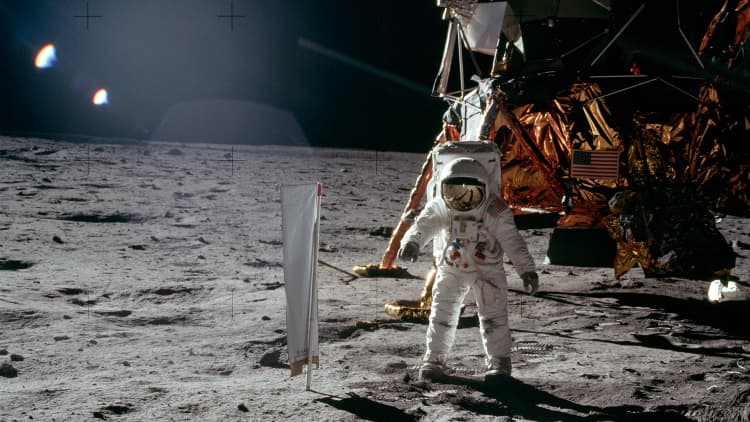
The livestream above is slated to begin at 5 p.m. ET. Please refresh the page if you don’t see a player at that time.
Lunar company Intuitive Machines is going for history on Thursday as it attempts to reach the moon’s surface in what would be the first American lunar landing since the Apollo era.
Intuitive Machines’ mission, known as IM-1, aims to soft land near the moon’s south pole at about 6:24 p.m. ET. With minutes to go before the estimated landing, the spacecraft was getting good readings and the engine was performing as expected.
There is an anticipated brief delay between the landing and when engineers will be able to assess its success.
A few minutes after the expected landing time, Intuitive Machines’ mission control was still trying to reconnect communications with the lander to confirm whether it landed.
If successful, the company’s Nova-C cargo lander, named “Odysseus” after the mythological Greek hero, would be the first U.S. spacecraft to land on the lunar surface since 1972. Intuitive Machines would become the first company to pull off the feat — government agencies have carried out all previous successful landings.
The IM-1 lander “Odysseus” in lunar orbit on Feb. 21, 2024.
Intuitive Machines
The company’s stock fell 11% in Thursday trading to close at $8.28 a share.
Intuitive Machines, a Houston, Texas-based company founded in 2013, went public a year ago. After shares hit an all-time low in early January, the stock has surged and more than tripled – a rally that Wall Street analysts describe as fueled by investor excitement around the IM-1 mission’s progress.
Go for landing
Odysseus will begin a series of maneuvers about one hour before the landing attempt, starting with “Descent Orbit Insertion.”
An illustration of the IM-1 mission, with milestones from launch to landing.
Intuitive Machines
IM-1 is targeting the “Malapert A” crater, about 300 kilometers from the moon’s south pole. After landing, Intuitive Machines aims to operate Odysseus on the surface for up to seven days.
The mission launched on a SpaceX rocket on Feb. 15. It is carrying 12 government and commercial payloads — six of which are for NASA under an $118 million contract.
Intuitive Machines and NASA leaders showcase a mockup of the company’s Nova-C lunar lander during a presentation on May 31, 2019.
Aubrey Gemignani / NASA
The hexagonal lander is 4.3 meters (or about 14 feet) tall, and its legs spread 4.6 meters (or about 15 feet) wide, making the spacecraft about the size of an SUV stood on its end.
NASA leadership emphasized before the launch that “IM-1 is an Intuitive Machines’ mission, it’s not a NASA mission.” IM-1 marks the second mission under NASA’s Commercial Lunar Payload Services (CLPS) initiative, which aims to deliver science projects and cargo to the moon with increasing regularity in support of the agency’s Artemis crew program.
Intuitive Machines’ Nova-C lunar lander on display at NASA’s Marshall Space Flight Center.
NASA
Lunar geopolitics
IM-1 is also the latest move in a broader geopolitical race to the moon. While Intuitive Machines represents the latest American effort, other nations – both U.S. rivals and allies – are pouring money into lunar programs.
Last month, Japan became the fifth country to land on the moon, following Russia, the U.S., China and India.
Governments and private companies alike have made more than 50 attempts to land on the moon with mixed success since the first attempts in the early 1960s, and the track record has remained shaky even in this century. But that’s not deterring the modern moon race that’s now well underway.
NASA expects U.S. companies to launch additional missions this year, while China plans to launch its next lunar lander in May.
